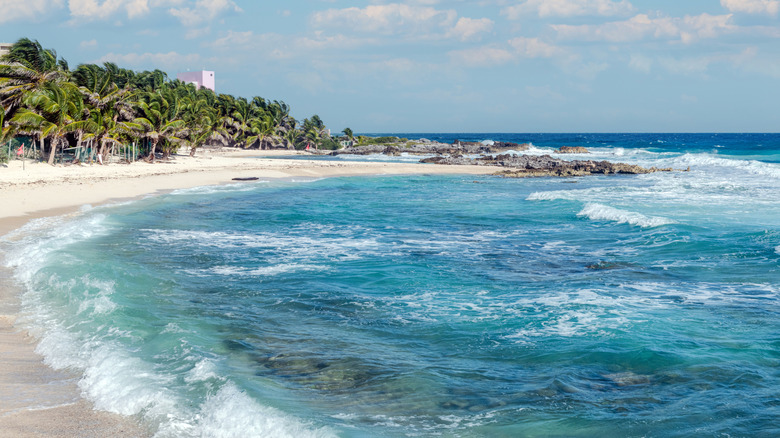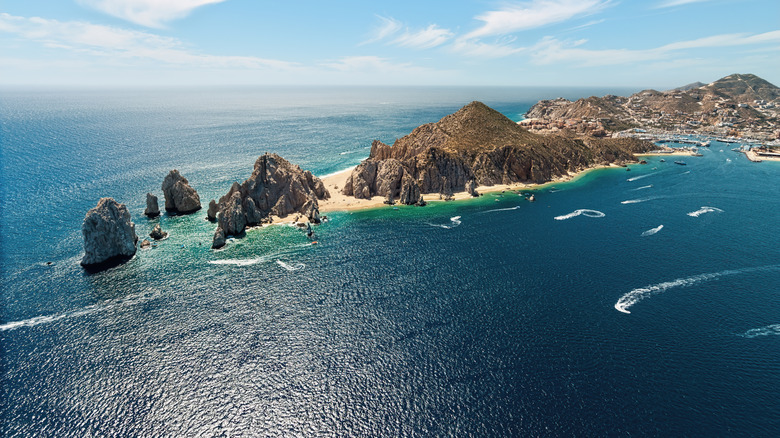This Dreamy Coastal Country Is Home To The Most Blue Flag Beaches In The Americas
Travelers to Mexico should be excited that their favorite seaside destinations may be some of the most sustainable, safe, and eco-friendly in the world. The "Blue Flag" is a special voluntary designation, awarded to sites throughout the world that are dedicated to sustainable tourism and visitation. In addition to strict environmental parameters and eco-friendly stewardship, the site must also provide educational opportunities for visitors to learn about said environmental conditions, as well as the importance and impact of that particular area. Blue Flag-awarded destinations must also provide accessibility and safety for their clientele. Designated Blue Flag beaches, therefore, are beaches that meet these site standards, and they can be found all over the world, from Cyprus, Europe's most underrated Mediterranean island, to the fiery red sands of Ramla Bay in Malta. Seeing a Blue Flag award communicates how seriously the locale takes its environmental preservation as well as its visitors' well-being. That said, the dreamy coastal country that's home to the most Blue Flag beaches in America is none other than Mexico.
Mexico is host to some of the most spectacular seaside destinations, so much so that travelers debate which shores reign supreme as Mexico's best beaches. Mexico boasts 77 Blue Flag-designated beaches overall, the most of any country in the Americas. While it outranks its neighbors, the country with the highest density of Blue Flag beaches in the world is actually Spain (at 638 beaches in total), followed closely by Greece (583), and Turkey (567). Such high concentrations of Blue Flag beaches, as well as other Blue Flag sites, indicate that these destinations — with Mexico leading the helm on the American continents — engage in significant environmental work.
What are Blue Flag beaches, exactly and where are they in Mexico?
The Blue Flag program, based in Copenhagen and a subsidiary of the Foundation for Environmental Education (FEE), not only sets the standard of environmental preservation that sites must achieve to be eligible for such a designation, but it also organizes educational and awareness campaigns, provides resource material, and highlights global efforts to keep spaces clean for future visitors. Blue Flag beaches, in particular, are considered some of the safest from a water-safety standpoint, as well as some of the cleanest waterside destinations in the world.
Los Cabos alone has 25 Blue Flag beaches while other popular destinations in Mexico, like Puerto Vallarta, feature three Blue Flag beaches. Quintana Roo — home to Isla Mujeres and Puerto Morelos — took the crown for most designations, receiving 33 awards. As Tourism Minister, Miguel Torruco Marques, commented on Mexico's big wins, he hopes that Mexico grows into a fully viable "green destination" in the future (per Mexico News Daily).
Blue Flag sites aren't limited to beaches either; marinas and even boats are eligible for the award if they maintain similar environmental and safety standards. Mexico was awarded 12 additional accolades during the 2024-2025 award season. In contrast, the United States only had two Blue Flag beach designations — Westward Beach in Malibu, California and Delray Municipal Beach in Florida. Inclusive of all of its awards, Mexico far outpaces the U.S. (and even Canada with 26 sites). With over 100 total Blue Flag designations, it's clear that Mexico is making a concerted effort to preserve and conserve its coastlines.

